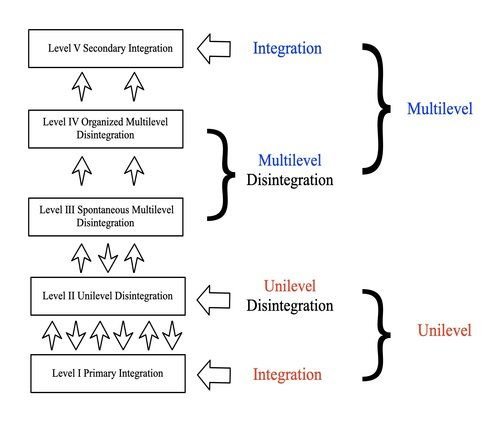How to reinvent yourself
We're in the era of the Great Reinvention.
Workers are reinventing themselves significantly.
When we're faced with life challenges, we question our values and belief systems. These moments trigger internal unrest, self-examination, and existentialism.
As we reinvent ourselves, we realize our professional identity is a fluid, not fixed, dimension of self. We can and do move along a spectrum between singularity (one identity) to multiplicity (many identities) to hybridity (integrated identity) in our professional selves.
Disintegrate to Reintegrate
What happens when we move along this identity spectrum is a series of disintegrations and reintegrations of our self-concept as our self-awareness expands over time and with experience.
Reinventing ourselves is fundamentally about facing major crises (like a pandemic) that spark an identity conflict of who we thought we were. Thus, we re-evaluate our purpose, needs and beliefs in our personal, social and professional spaces.
In moments of reinvention, we can either slide towards traditionally held social norms and mores, becoming more of who we think people want us to be, or we can slide away from others, leaning into and adopting our individual beliefs that may be unpopular or abnormal.
We choose whether to stand apart or fit in. Ultimately, we strive for optimal distinctiveness where we find the sweet spot of both, as defined by Marilyn Brewer.
However, reinventing ourselves and finding that sweet spot is difficult for a myriad of reasons.
On one hand, there's inertia. We feel pulled back to parts of ourselves we're attached to, identities we don't want to let go of. On the other hand, it's easier to blend in with the crowd. Even when we think we're carving our own path, most of us still ascribe to the collective.
Dabrowski’s Theory of Positive of Disintegration
Dabrowski's theory of positive disintegration discusses a five stage multilevel theory of how we attempt to become our fullest, most uniquely integrated expression of ourselves (that's stage five).
Most of us yo-yo back and forth between the first two or three levels. Dabrowski claims that instead of integrating towards higher levels of what makes us truer and authentic in our identity, we tend to integrate down back towards the norm.
Examples of people who have achieved stage five integration in their identity are Martin Luther King Jr. and Nelson Mandela. When we think of these individuals, they were revolutionaries. The roles they played in society were as outsized individuals who didn't fit the mold. They stood in their conviction of what was right, and they didn't bend who they were or what they believed in. Their steadfastness anchored them in a truly profound identity that most of us can't comprehend.
It's just that hard to "positively disintegrate" upward and stay up there.
Why Integration Matters to Reinvention
I bring this up because my research on hybrid professional identity is about integrating multiple professional identities into a version that is greater than the sum of singular identities alone.
Hybridity is a space of reinvention and (re)integration.
I believe hybrid professional identity is a difficult professional identity to achieve and sustain. Developing into an integrated, or hybrid, professional identity is less common and less understood. It requires more self-awareness, self-determination, self-assuredness and self-belief to operate from this integrated space than it does to operate from a space of singularity or multiplicity of professional identities.
People don't understand hybrid professionals because they don't understand the nature of integration, or positive disintegration.
Becoming a hybrid professional isn't just a feat of blending identities together. It's an act of reinventing yourself because you have to entirely let go of old labels and constructs to allow your unique version to emerge.
Integration happens as a result of shedding the old and not replacing it with the familiar.
How You Can Reinvent Yourself
If you're in a process of reinventing yourself, here are some tips:
Trust yourself: You have to belief in yourself. This is the internal validation part.
Work with a therapist or a coach: This is where a life coach, professional identity coach or other person trained in personal development becomes paramount.
Be willing to disintegrate to reintegrate: We have to break ourselves apart to put ourselves back together.
Know what you really stand for, what makes you, you: The more you know your quirky interests and own them, the better.
Align to your moral compass: Use this to anchor yourself in who you are and match your life and professional decisions to it.
Be okay with being unpopular: Most hybrid professionals will never "fit in" or belong and that's okay. They still have something powerful to offer the world.


